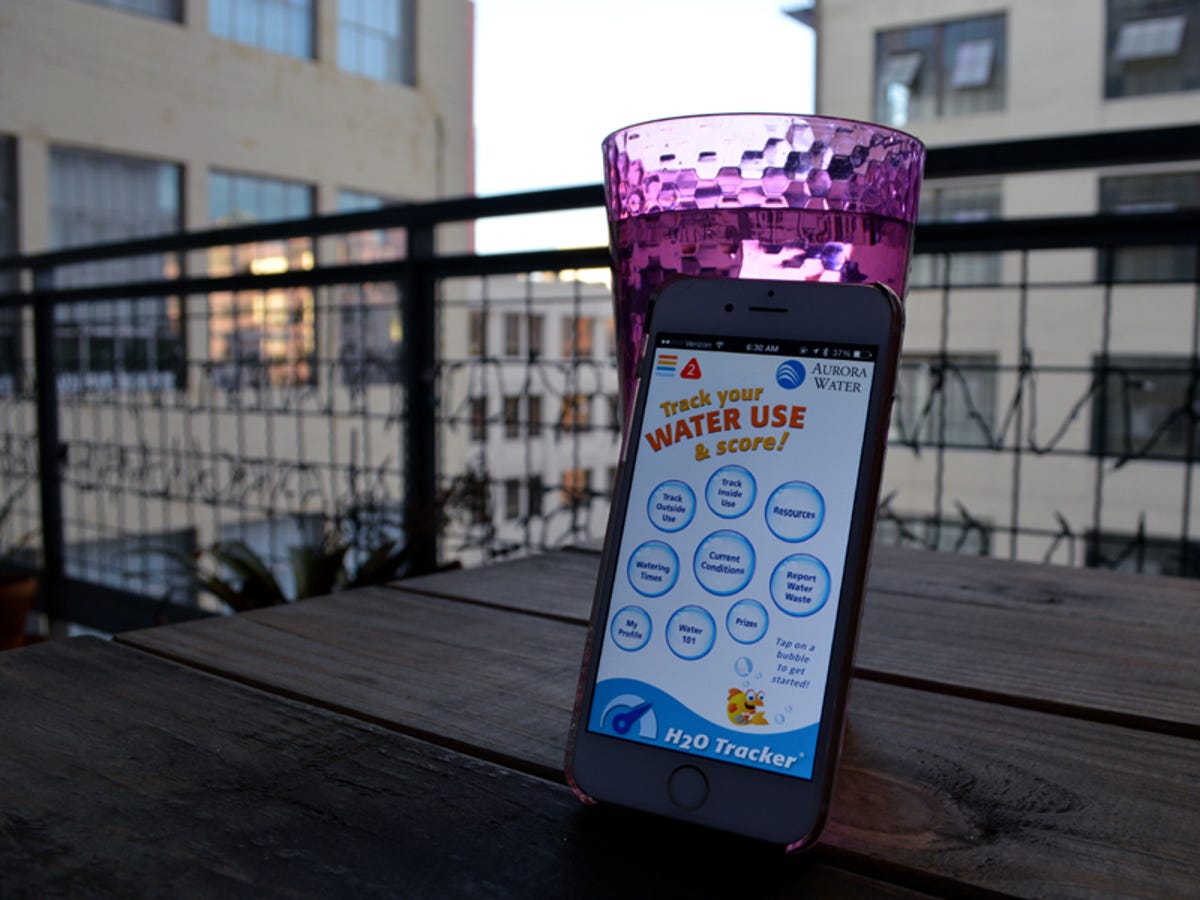
Sarah Jacobsson Purewal/CNET
According to the US Drought Monitor, 94.6 percent of California is currently facing severe to exceptional drought. Even if you happen to live in a state or country that’s blessed with abundant rainfall, it’s never too early to start conserving water. If you’re not sure where to start, I have good news for you — there are several apps that can help you learn about water conservation, track your water usage, and take steps to cut back on usage.
H2O Tracker


Sarah Jacobsson Purewal/CNET
The first step to conserving water is understanding how much water you actually use. H2O Tracker (iOS, Android) is a free app that helps you track both your inside and outside water usage. All you have to do is answer questions (there are a few questions that ask about your shower head/faucet output, but the app walks you through finding those numbers) about your household’s water usage, and the app figures out what areas you need to work on. The app also awards points for answering questions and taking steps to conserve water — if you live in the Aurora Water district, you can sign up for an H2O Tracker account and redeem those points for tangible prices, such as wildflower seeds or a shower head.
Dropcountr


Sarah Jacobsson Purewal/CNET
If you get a monthly or bi-monthly water bill, it’s probably not very easy to figure out exactly how much water your household is using on a daily basis. Dropcountr (iOS, Android) is a free app that taps directly into your water utility, allowing you to see your water usage in real time (well, daily) — and, hopefully, use that knowledge to reduce your water consumption. In addition to real-time updates, Dropcountr provides you with helpful information such as how much water you use compared to similar-sized households, utility rebates for conservation measures, and new regulations that apply to your area. Dropcountr’s main drawback is its limited availability — at the moment, it’s only available for five utilities: Austin Water, Folsom, Lake Arrowhead, Park Water, and Purissima Hills Water District.
Water1der


Sarah Jacobsson Purewal/CNET
How much do you know about water conservation and water usage in the first place? Water1der (iOS) is a free water trivia app designed by The Groundwater Foundation. Although Water1der is technically designed as an educational tool for classrooms, it’s packed with facts you probably didn’t know. For example: did you know that it takes approximately 1,400 gallons of water to produce a burger, fries and a soft drink?
Shower Watch


Sarah Jacobsson Purewal/CNET
Shower Watch (iOS) is a free app that works with the Apple Watch and acts as a shower timer and water tracker. To track your showering water usage, you first input the type of shower head you have (low-flow, standard, rain) or the exact water rate of your shower head in gallons or liters per minute. Then you set the timer on your Apple Watch (there’s a timer mode and a countdown mode) and start showering…with your Watch. Your Watch is technically water-resistant, so showering shouldn’t hurt it, but that’s a risk not everyone is going to want to take. ShowerWatch keeps a one-week log of your water usage for free, and for month- and year-long views you’ll need to upgrade to the premium version.
Rain Harvest


Sarah Jacobsson Purewal/CNET
When (if) it does rain in your area, you can conserve water by collecting the rainwater that falls off your roof. Rain Harvest (iOS) is a free app that helps you figure out how much water you could theoretically collect, assuming you had some sort of collection method in place. This is a super simple app that asks you to input a few variables, including the “catchment area” (the square footage of your roof), the rainfall in inches, the number of collection points, and the runoff efficiency of your surface as a percentage. According to the company, if you’re unsure of the runoff efficiency, 75 percent is a good estimate, and according to this runoff coefficient fact sheet by the California government, most roofs are between 75 and 95 percent.



